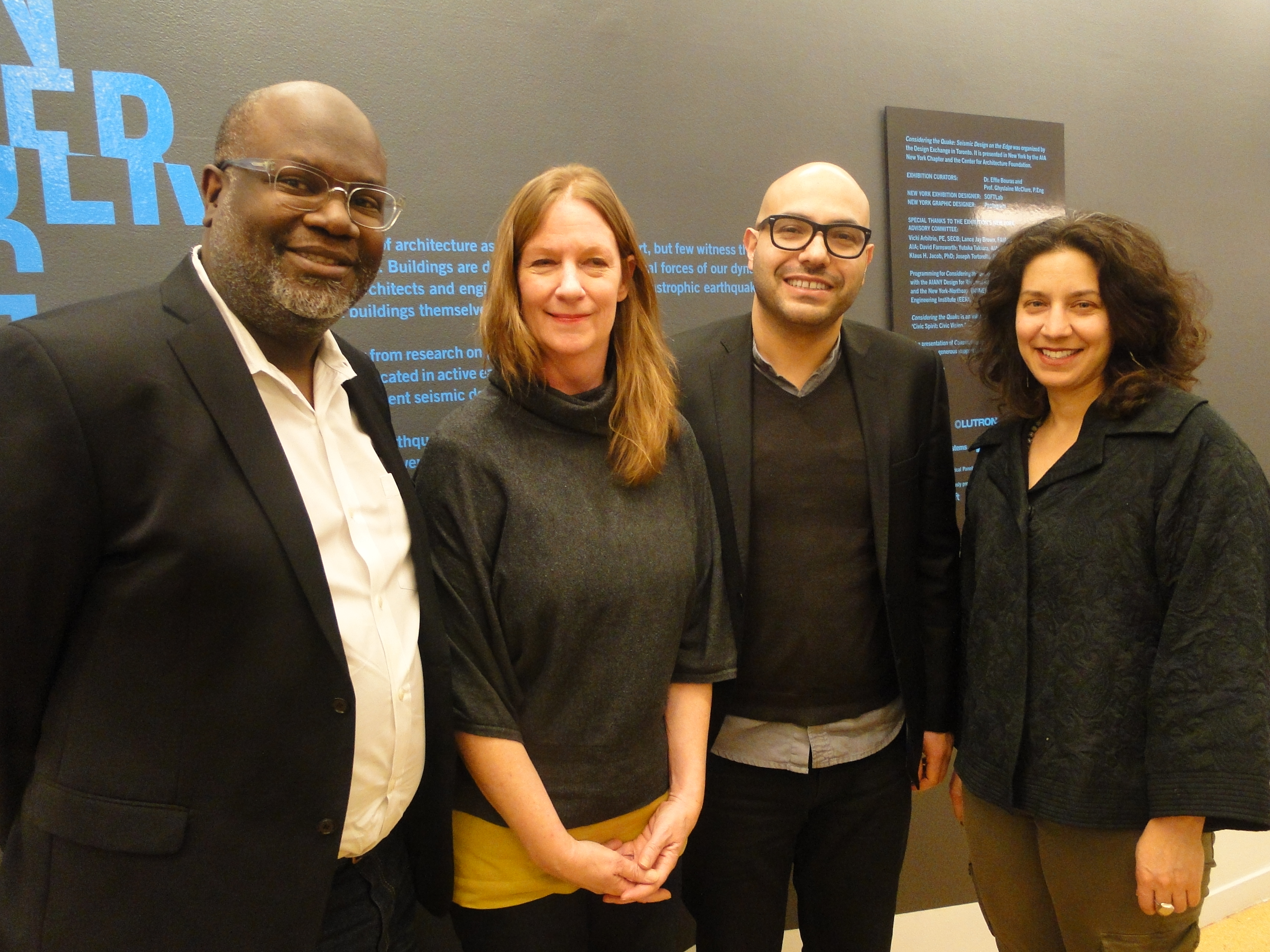by: Marvine Pierre Assoc. AIA
Mark Gardner, AIA, LEED AP, opened the “Invisible Histories: The Social Practice of Civic Engagement” program by introducing the concept of invisibility and civic engagement: “Tonight is about making the invisibile, visible. Each of these panelists has studied and participated in a process to understand how to uncover the stories of marginalized communities.” He was referring to the buildings, vacant lots, and public spaces where these communities existed unchanged. The lecture helped shine a light on people’s numbness towards these communities, and bring the matter of civic engagement to the forefront of our attention, prompting us to pause and take notice the public housing “projects” on our way to work in the morning.
The panelists Quilian Riano, Lisa Bateman, and Gita Nandan, RA, LEED AP, brought a variety of experiences with marginalized communities to the discussion. Riano discussed the potential of design to help reveal structures of power and improve the urban context of working-class communities that are often forgotten. His firm DSGN AGNC is currently working with the La Union Housing Co-Op in Facatativa, Colombia, on the design of 50-unit low-income housing project. Through his research, he plans to adapt designs suitable to creating a long-term plan for the community’s wellbeing, and one in which residents can improve upon over time.
Lisa Bateman discussed her work in New York City. In her exhibits, she explores site, community, and response. The project highlights local cultures, architecture, and the changing destiny of cities and towns as it has to do with political and social concerns. “Inhale,” an experiential exhibit, tells the story of an abandoned project located on a former pier in the South Street Seaport area in Lower Manhattan. As part of the visitor’s experience, odors were fabricated to produce smells such as tar, brine, fish, or salt water. These scents were used to trigger the history of the abandoned maritime harbor, soon to be developed for tourism and public parks, before it vanished from history altogether.
Greening Red Hook, Brooklyn, was the focus of Gita Nandan’s response to civic engagement. With her firm the thread collective, she explores building, art, and landscape, and how, when combined, they create diverse ecological and social built environments. Her firm, in partnership with the NYC Department of Parks & Recreation and the Design Trust for Public Space, launched the Five Borough Farm with the mission to expand urban agriculture in New York City. The Red Hook project was one specific area in which the Five Borough Farm was implemented to make use of a vacant lot, thus giving back to the community.
Marvine Pierre, Assoc. AIA, is an architectural designer at Kohn Pedersen Fox, and a contributing writer to e-Oculus. She is also a member of the Emerging New York Architects (ENYA) Committee.
Event: Invisible Histories: The Social Practice of Civic Engagement
Location: Center for Architecture, 02.24.14
Speakers: Lisa Bateman, Artist and Adjunct Associate Professor, Pratt Institute; Gita Nandan, RA, LEED AP, thread collective; Quilian Riano, Principal, DSGN AGNC; and Mark Gardner, AIA, LEED AP, Jaklitsch/Gardner Architects (moderator)
Organizers: AIANY Diversity and Inclusion Committee and nycobaNOMA








